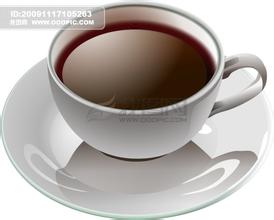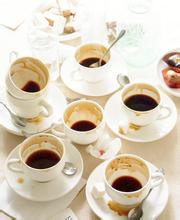Introduction to the flavor and taste characteristics of coffee from Santa Barara Manor, Honduras.
Honduras declared its independence on September 15, 1821, but was incorporated into the first Mexican Empire in 1822. He joined the Central American Union in 1823 and withdrew from the Central American Union in October 1838 to establish a republic. In 1840, with the support of Guatemalan dictator Rafael Carrera, conservative Francisco Ferreira established a dictatorship. After 1853, liberals and conservatives in Honduras often had coups and civil wars, and the regime changed frequently. The gold and silver mining industry has been damaged, which has greatly affected the economic development. Since the 1840s, Britain occupied eastern Honduras and the Baya Islands, built railways and obtained the concession of large tracts of land.
From its independence in 1821 to 1978, Honduras has had 139 coups, making it one of the countries with the most frequent coups in Latin America. Ramon Villeda Morales of the Liberal Party won the 1957 general election as president. Oswaldo Lopez Arellano, commander of the armed forces, launched a coup instigated by the United States in 1963, overthrew the Morales regime, and was elected president in 1965. Ramon Ernesto Cruise of the Kuomintang won the election in 1971, but soon after taking office, Arellano staged another coup. In 1975 Juan Alberto Melgar Castro, commander of the armed forces, staged a coup to replace Arellano. In 1978, Policarpo Pasgarcia, commander of the armed forces, launched a coup and formed a military council headed by him. The current constitution of Honduras entered into force on January 20, 1982. The Constitution stipulates that Honduras is Republican, democratic and representative. The National Assembly is the supreme legislature. The president is the head of state and government and the commander-in-chief of the armed forces, and is in charge of the executive power of the country. The Cabinet is the executive branch of the government, directly under the leadership of the President. [2]
Ignoring opposition from the Supreme Court, the military, Congress and the ruling party, President Zelaya insisted on holding a referendum on June 28, 2009, asking voters whether they agreed to set up a Constituent Assembly to amend the constitution so that the president could be re-elected during the presidential election in November 2009. at the same time, a formal referendum was held, as the military had previously refused to deliver the referendum votes and launched a military coup an hour before the referendum. The military gathered hundreds of soldiers to the presidential residence to arrest President Zelaya, took him to an air base on the outskirts of Tegucigalpa, the capital, and then sent a special plane to exile Zelaya to Costa Rica.
Honduran coffee seems strange to many coffee drinkers.
When it comes to coffee production, the geographical conditions of Honduras are no less than those of neighboring coffee-producing countries such as Guatemala and Nicaragua.
However, in the past, Honduras was less well-known in the consumer market because it did not have strong support in the handling and transportation of raw beans. However, in recent years, the country has begun to change dramatically, and the emphasis on the coffee industry has slowly opened up the international popularity of coffee from Honduras.
There are six main coffee producing areas in Honduras, including Santa Barbara, Copan, Ocotepeque, Lempira, La Paz and El Paraiso in the southeast. Honduran coffee tastes less acidic, while caramel is more sweet.
The taste of coffee from these five different producing areas is also slightly different, some slightly sour, some have a unique flavor. Its quality is not bad at present, but because it is still promoting its popularity, the price of coffee in the country is actually quite competitive.
Because of its flavor characteristics, it is a good choice to make a single product or add mixed coffee, or even one of the beans with Espresso ingredients.
Hongduras coffee bean particles are large in shape, uniform in size, uniform in color and glossy. In order to facilitate harvesting, farmers will prune the coffee trees to no more than 150 centimeters, because if they grow too high, they have to set up ladders to pick, which is not only time-consuming, but also may damage the trees by bending branches. As the ripening period of each fruit of coffee beans is different, in order to maintain the good quality of coffee beans, it is necessary to pick them manually, and then select the ripe fruits. For coffee fruits of the same branch, it often takes several weeks to pick them all.
High-quality coffee in Honduras uses water washing to deal with coffee beans, usually after soaking, when the defective fruit will surface, it can be discarded first. Then put the good fruit into the fruit peeling machine and peel off the peel with the rotating force of the machine. Peeled fruits are screened by machines to select fruits of high quality. Usually the bigger the fruit, the better the maturity. Coffee in Honduras is dried in the sun, so there is always a hint of fruit in the taste.
Hongdulas coffee has a rich and mellow taste, taste is not astringent, not sour, mellow and aroma are very high, quite personality. Honduran coffee can lead to multiple levels of flavor depending on the degree of roasting. Moderate baking can maximize the sweetness of beans, while deep baking increases bitterness, but sweetness does not disappear. Generally speaking, medium roasting has the best taste, has a rich and unique aroma, and is popular with coffee lovers in Honduras.

Important Notice :
前街咖啡 FrontStreet Coffee has moved to new addredd:
FrontStreet Coffee Address: 315,Donghua East Road,GuangZhou
Tel:020 38364473
- Prev

Introduction to coffee flavor of Sumatra Lindongla Sunawahanna Manor with strong flavor
Sumatra has an equatorial crossing and belongs to a tropical rain forest climate (high temperature and rainy throughout the year, with obvious dry and wet seasons [1]). Due to the high temperature and rainy all the year round, there is little temperature difference in different places, but there are obvious differences in rainfall. The annual precipitation along the west coast is 3000 mm. The geographical location of Sumatra Island is Sumatra. The mountain area can reach 4500-6000 mm. The annual precipitation from the eastern slope of the mountains to the coastal plain 2.
- Next

Introduction to the fragrant, pure and slightly sour coffee flavor of El Renas Manor.
The national emblem of El Salvador was used on September 15, 1912. The national emblem of El Salvador is an equilateral triangle whose three yellow lines represent equality, truth and justice respectively. Five volcanoes rise between the Pacific Ocean and the Atlantic Ocean, symbolizing the five countries in Central America. The pole of freedom and the red cap of freedom stand high on the top of the mountain, radiating the light of freedom and liberation.
Related
- Does Rose Summer choose Blue, Green or Red? Detailed explanation of Rose Summer Coffee plots and Classification in Panamanian Jade Manor
- What is the difference between the origin, producing area, processing plant, cooperative and manor of coffee beans?
- How fine does the espresso powder fit? how to grind the espresso?
- Sca coffee roasting degree color card coffee roasting degree 8 roasting color values what do you mean?
- The practice of lattes: how to make lattes at home
- Introduction to Indonesian Fine Coffee beans-- Java Coffee producing area of Indonesian Arabica Coffee
- How much will the flavor of light and medium roasted rose summer be expressed? What baking level is rose summer suitable for?
- Introduction to the characteristics of washing, sun-drying or wet-planing coffee commonly used in Mantenin, Indonesia
- Price characteristics of Arabica Coffee Bean Starbucks introduction to Manning Coffee Bean Taste producing area Variety Manor
- What is the authentic Yega flavor? What are the flavor characteristics of the really excellent Yejasuffi coffee beans?

